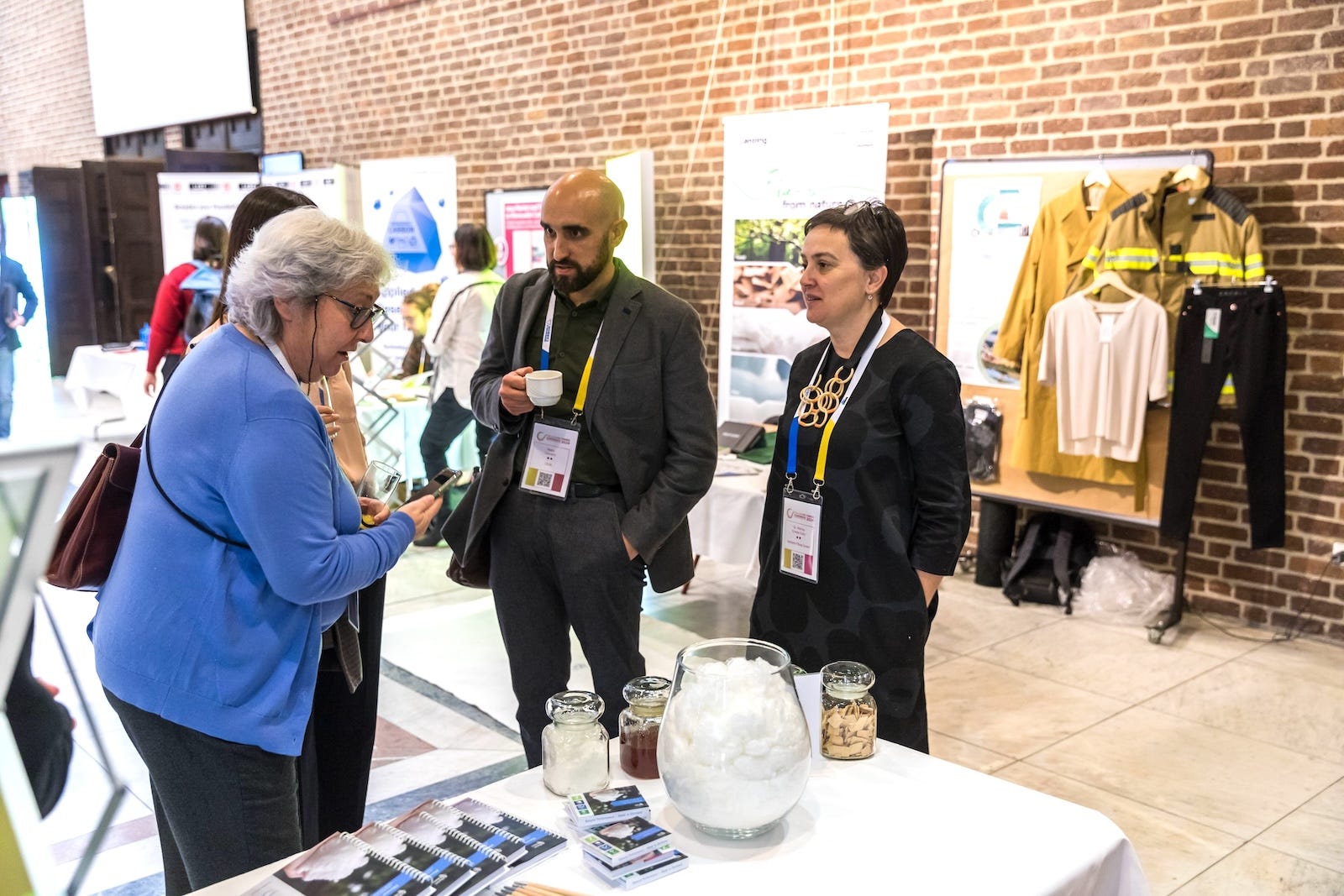Cellulose Fibres Conference highlights potential and innovations of this sustainable material.
Cellulose fibres are rapidly emerging as a game-changer in the fight for a more sustainable future. The Cellulose Fibres Conference 2024, held in Cologne, Germany, on March 13 and 14 showcased the immense potential of this bio-based and biodegradable material. Cellulose fibres stand out for their versatility. Derived from wood pulp or various cellulosic waste streams, they can be used in a vast array of applications, from textiles and hygiene products to construction materials and packaging. This characteristic makes them a powerful tool for reducing reliance on non-renewable resources and minimizing environmental impact.
The conference highlighted the crucial role cellulose fibres can play in achieving sustainability goals within the textile industry. The Single-Use Plastics Directive (SUPD) in Europe, which restricts the use of single-use plastics, is driving innovation towards more sustainable alternatives. Cellulose fibres offer a viable solution, with applications ranging from clothing and footwear to wipes and disposable products.
The conference brought together over 214 participants and 23 exhibitors from 27 countries. Leading experts presented the latest market trends, showcasing the vast potential of cellulose fibres. From advancements in recycling cellulose-rich materials to practical examples of circular economy practices, the presentations offered valuable insights across various sectors.
A key highlight of the conference was the "Cellulose Fibre Innovation of the Year" Award. This award recognizes innovative applications and innovations that are leading the way towards a future built on sustainable fibres. The winners were:
- First Place: The Straw Flexi-Dress (DITF & Vretena, Germany): This innovative dress utilizes cellulose filaments made from unbleached straw pulp, showcasing a closed-loop production process and environmentally friendly technology.
- Second Place: Honext Board FR-B (Honext Material, Spain): This fire-retardant board is crafted entirely from upcycled industrial waste fibres from the paper industry. It boasts impressive sustainability credentials, achieving Cradle-to-Cradle Certified GOLD and a carbon-negative footprint.
- Third Place: A new generation of bio-based and resource-efficient Fibre (TreeToTextile, Sweden): This unique cellulose-based fibre offers a natural feel similar to cotton, with the potential to replace conventional fibres like cotton, viscose, and polyester. It boasts low environmental impact with minimal water, energy, and chemical requirements.

These award-winning innovations demonstrate the exciting possibilities within the cellulose fibre industry. From utilizing agricultural waste to creating fire-safe building materials, the potential for sustainable solutions is vast.
The conference proved to be a valuable platform for networking and knowledge exchange. The positive feedback from participants underscores the growing interest in cellulose fibres as a sustainable alternative. With continued innovation and collaboration, cellulose fibres are poised to play a transformative role in shaping a more sustainable future across various industries. The next Cellulose Fibres Conference will be held on March 12-13, 2025.
